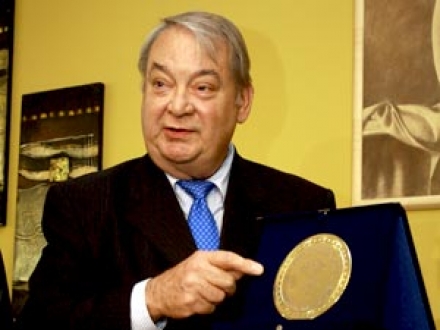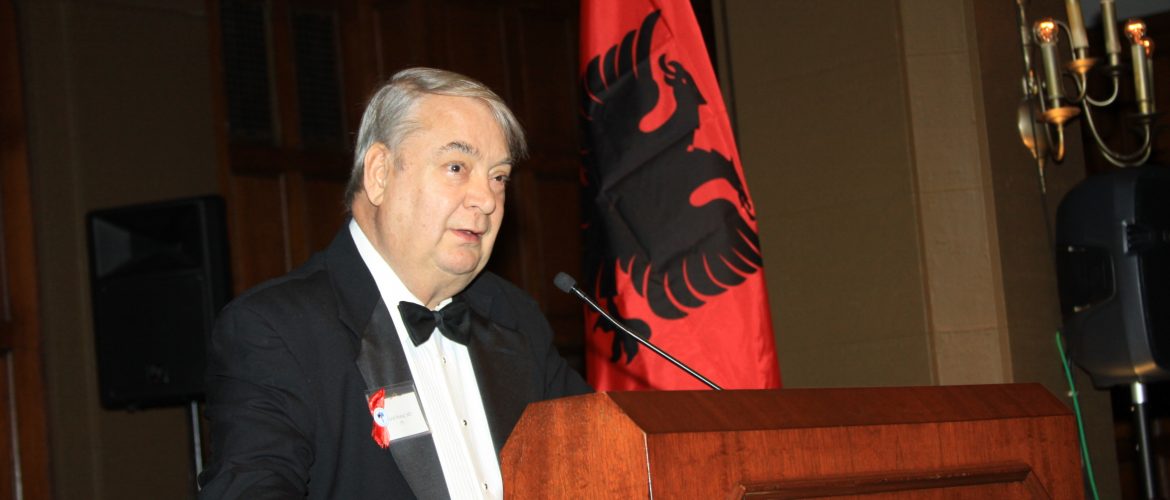Ferid Murad (born September 14, 1936) is an Albanian American physician and pharmacologist, and a co-winner of the 1998 Nobel Prize in Physiology or Medicine.
He is married to Carol A. Murad with whom he has five children and nine grandchildren. He received his undergraduate degree in chemistry from the pre-med program at DePauw University in 1958, and MD and pharmacology Ph.D. degrees from Case Western Reserve University in 1965. He was an early graduate of the first explicit MD/PhD program which would later lead to the development of the prestigious Medical Scientist Training Program. He was an Intern in Internal Medicine at Massachusetts General Hospital (1965–66), Resident in Internal Medicine (1966–67), Clinical Associate and Senior Assistant Surgeon, Public Health Service, National Heart and Lung Institute (1967–69) and Senior Staff Fellow there from 1969-70. He then joined the University of Virginia, where he was made associate professor, Depts. of Internal Medicine and Pharmacology, School of Medicine in 1970, before becoming a full Professor in 1975. From 1971-81 he was Director, Clinical Research Center, UVA School of Medicine and Director, Division of Clinical Pharmacology, Dept. of Internal Medicine, UVA School of Medicine (1973–81). Murad moved to Stanford University in 1981 where he was Chief of Medicine at the Palo Alto VA Medical Center (1981–86), Associate Chairman, Dept. of Medicine, Stanford University (1984–86), and Acting Chairman, Dept. of Medicine and Acting Division Chief, Division of Respiratory Medicine from 1986-88. In 1988 he was the American Heart Association, Ciba Award Recipient. Murad left his tenure at Stanford in 1988 for a position at Abbott Laboratories, where he served as a Vice President of Pharmaceutical Discovery until founding his own biotechnology company, the Molecular Geriatrics Corporation, in 1993. Murad went back to academics and joined the University of Texas Medical School at Houston to create a new department of integrative biology, pharmacology, and physiology in 1997. There, he was the chairman of Integrative Biology and Pharmacology, Professor and Director Emeritus of The Brown Foundation Institute of Molecular Medicine for the Prevention of Human Disease, John S. Dunn Distinguished Chair in Physiology and Medicine, Deputy director of The Brown Foundation Institute of Molecular Medicine, and later a Professor at the Brown Foundation Institute of Molecular Medicine. In April 2011, he moved to the George Washington University as a Professor in the Department of Biochemistry and Molecular Biology.

Murad's key research demonstrated that nitroglycerin and related drugs worked by releasing nitric oxide into the body, which relaxed smooth muscle by elevating intracellular cyclic GMP. The missing steps in the signaling process were filled in by Robert F. Furchgott and Louis J. Ignarro of UCLA, for which the three shared the 1998 Nobel Prize (and for which Murad and Furchgott received the Albert Lasker Award for Basic Medical Research in 1996). He is also a member of the National Academy of Sciences among other notable societies.

In 2015, Murad signed the Mainau Declaration 2015 on Climate Change on the final day of the 65th Lindau Nobel Laureate Meeting. The declaration was signed by a total of 76 Nobel Laureates and handed to then-President of the French Republic, François Hollande, as part of the successful COP21 climate summit in Paris.
